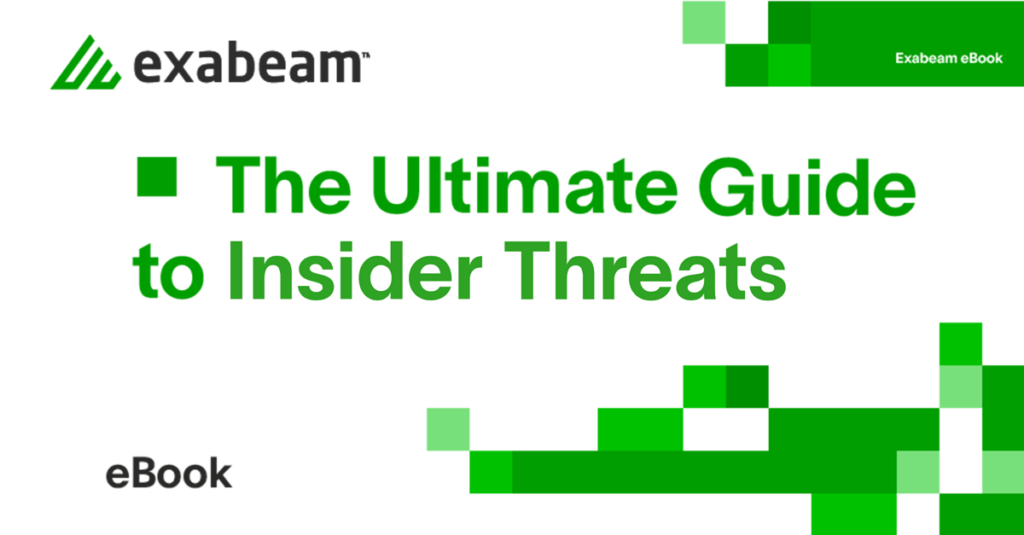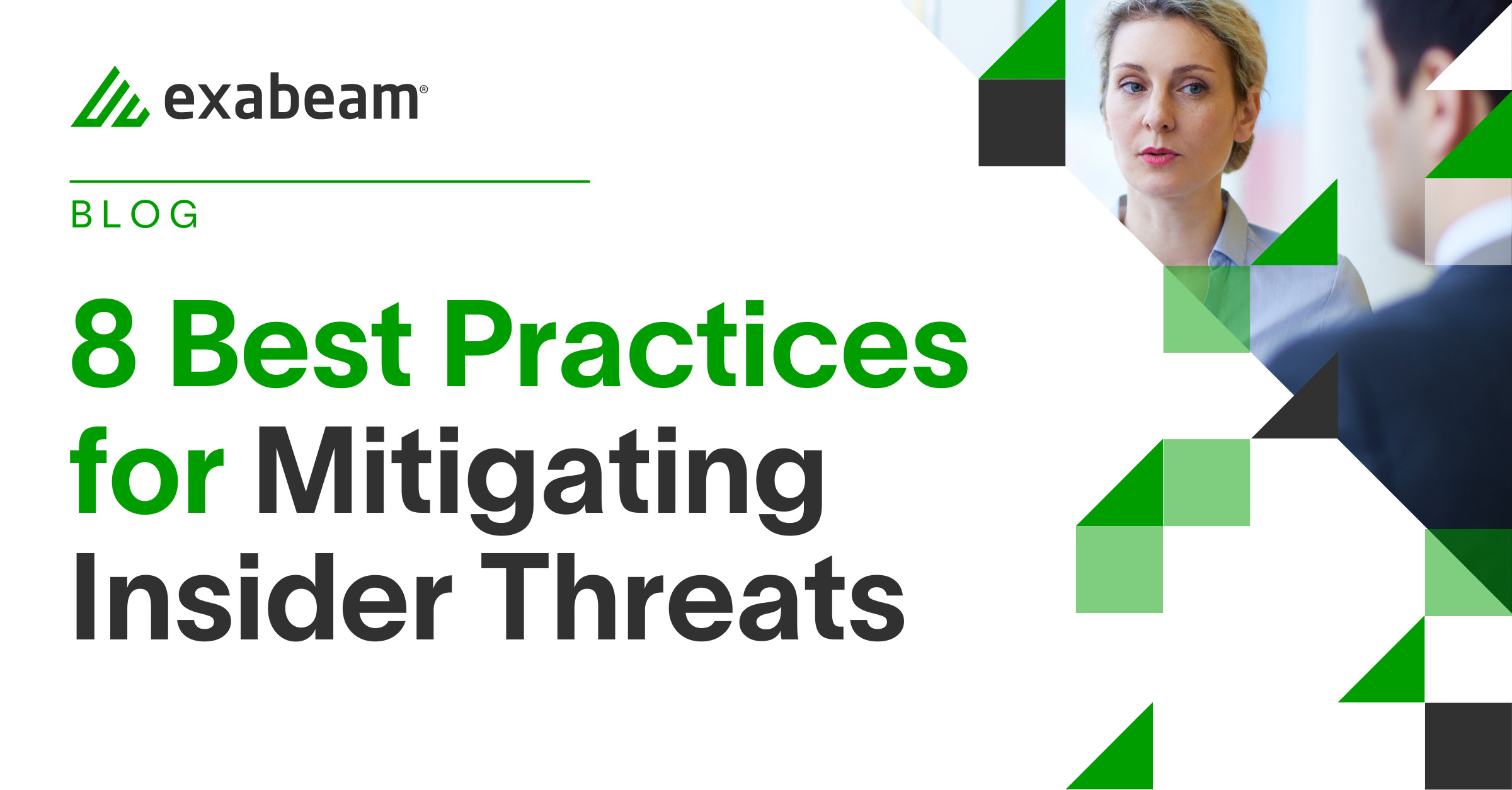Organizations face various threats daily. However, one growing threat type that warrants special attention is insider threats. These threats involve employees, contractors, or partners who have legitimate access to an organization’s assets, making them particularly challenging to detect and prevent. In this multi-part blog series, we will take an in-depth look at insider threats, exploring their types, potential impact, best practices for mitigation, and the role of modern, advanced security information and event management (SIEM) solutions in detecting them.
In this first post, we will focus on the various types of insider threats, their consequences, and eight essential best practices to help your organization safeguard against these threats. In the following posts we will go deeper into the role of modern SIEM solutions in detecting insider threats, provide real-world examples of insider threats, and discuss the different detection points that can be used to identify them.
In this article:
- Types of insider threats
- The impact of insider threats
- 8 best practices for mitigating insider threats
- Conclusion
Types of insider threats
Insider threats can be broadly classified into three categories:
- Malicious insiders — These individuals have malicious intent and deliberately abuse their access privileges to steal sensitive data, disrupt operations, or cause harm to the organization. Malicious insiders might include disgruntled employees, corporate spies, or individuals coerced by external threat actors.
- Conduct regular risk assessments — Perform periodic risk assessments to identify vulnerabilities, evaluate the effectiveness of existing security controls, and prioritize assets based on their sensitivity and importance to the organization.
- Compromised insiders — Compromised insiders are individuals or service accounts whose credentials or devices have been hijacked by external attackers. These attackers use the compromised insider’s access to infiltrate the organization and conduct malicious activities via legitimate credentials.
The impact of insider threats
The consequences of insider threats to an organization can be severe and may include:
- Financial losses — due to data breaches, theft of intellectual property, or damage to critical infrastructure
- Operational disruptions — leading to downtime, lost productivity, and reputational damage
- Legal and regulatory consequences — for failing to protect sensitive data or comply with industry-specific regulations
- Loss of trust and employee morale — leading to a toxic work environment and increased employee turnover
8 best practices for mitigating insider threats
To address the growing risk of insider threats, organizations should adopt a multi-layered approach that encompasses people, processes, and technology. Here are eight best practices for mitigating insider threats:
- Develop a comprehensive insider threat program — An effective insider threat program should involve collaboration between various departments, such as IT, Security, Legal, Human Resources, and executive units. This program should include policies and procedures for onboarding, offboarding, and monitoring employee activities throughout their tenure.
- Conduct regular risk assessments — Perform periodic risk assessments to identify vulnerabilities, evaluate the effectiveness of existing security controls, and prioritize assets based on their sensitivity and importance to the organization.
- Implement robust access controls — Implement the principle of least privilege, granting users access only to the information and resources necessary to perform their jobs. Additionally, use multifactor authentication (MFA) and monitor access patterns to detect suspicious behavior.
- Provide security awareness training — Educate employees about potential insider threats, the importance of following security policies, and how to recognize and report suspicious activities. This training should be ongoing and tailored to different roles within the organization.
- Monitor user activity — Use advanced monitoring and detection tools, such as SIEM solutions with user and entity behavior analytics (UEBA) capabilities, to detect anomalies in user behavior and alert security teams to potential insider threats.
- Establish a reporting mechanism — Encourage employees to report suspicious activities, unusual occurrences, or security concerns through an anonymous reporting mechanism. This can help foster a culture of shared responsibility and increase the likelihood of detecting insider threats early.
- Conduct regular audits and reviews — Perform periodic audits of your insider threat program, including access controls, monitoring tools, and incident response procedures. Update your program based on the findings of these audits and apply lessons learned from previous incidents to prevent similar threats in the future.
- Collaborate with external partners — Work with industry peers and third-party vendors to share threat intelligence and best practices related to insider threats. This collaboration can help you stay ahead of emerging trends and improve your overall security posture.
Conclusion
By adopting a multi-layered approach that encompasses people, processes, and technology, organizations can significantly reduce their exposure to insider threats. In particular, modern SIEM solutions with advanced features such as UEBA and automation can play a critical role in detecting and mitigating these threats.
As you continue to develop and refine your organization’s insider threat program, remember to collaborate with internal stakeholders and external partners, maintain transparency and trust with your employees, and leverage the power of advanced security tools.
Stay tuned for the second post in the series, where we’ll explore the role of modern SIEM solutions in detecting insider threats, provide real-world examples of insider threats, and discuss the different detection points that can be used to identify these threats.
To learn more, read The Ultimate Guide to Insider Threats
Do you know what the biggest threat is to your organization? The answer may surprise you. It’s your own employees, contractors, and other insiders. These trusted insiders have authorized access to sensitive information and can cause significant harm to your organization, whether they mean to or not.
Insider threats are a growing concern for organizations worldwide, and it’s essential to understand the risks they pose and how to defend against them. That’s why we’ve created this comprehensive guide to help you better understand what insider threats are and how to protect your organization from them.
Read this eBook to learn about:
- What insider threats are and why they’re a growing concern
- The importance of simulation and security training for defending against insider threats
- A modern approach to insider threat detection, including real-world examples and case studies
- Advanced best practices for insider threat programs, including data science, data feed detection points, and use cases.
With this guide, you’ll know how to improve your organization’s overall security posture with faster, easier, and more accurate insider threat detection, investigation, and response. Download now!

Similar Posts
Recent Posts
Stay Informed
Subscribe today and we'll send our latest blog posts right to your inbox, so you can stay ahead of the cybercriminals and defend your organization.
See a world-class SIEM solution in action
Most reported breaches involved lost or stolen credentials. How can you keep pace?
Exabeam delivers SOC teams industry-leading analytics, patented anomaly detection, and Smart Timelines to help teams pinpoint the actions that lead to exploits.
Whether you need a SIEM replacement, a legacy SIEM modernization with XDR, Exabeam offers advanced, modular, and cloud-delivered TDIR.
Get a demo today!













